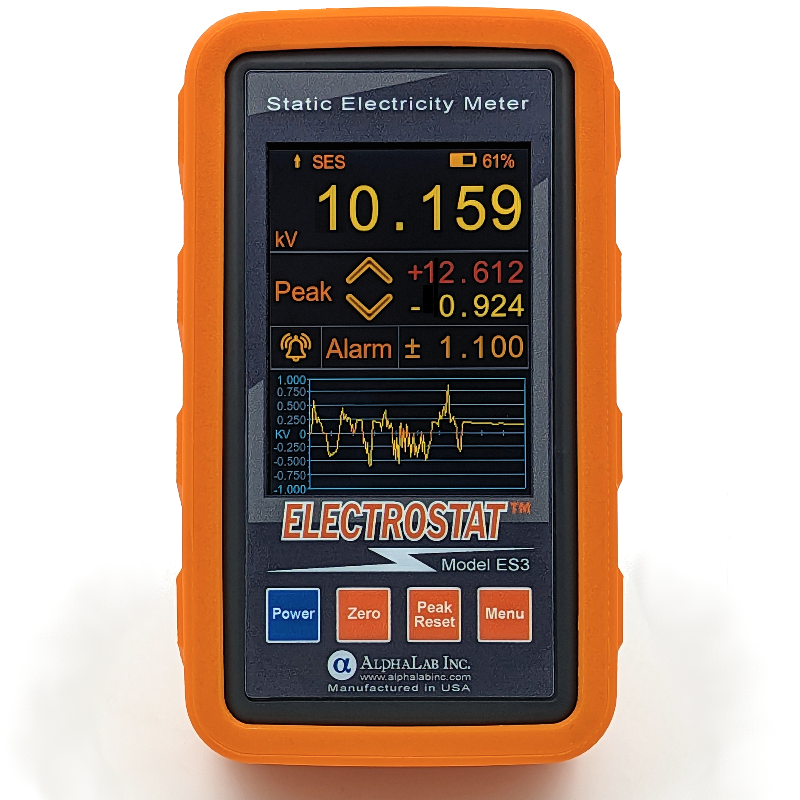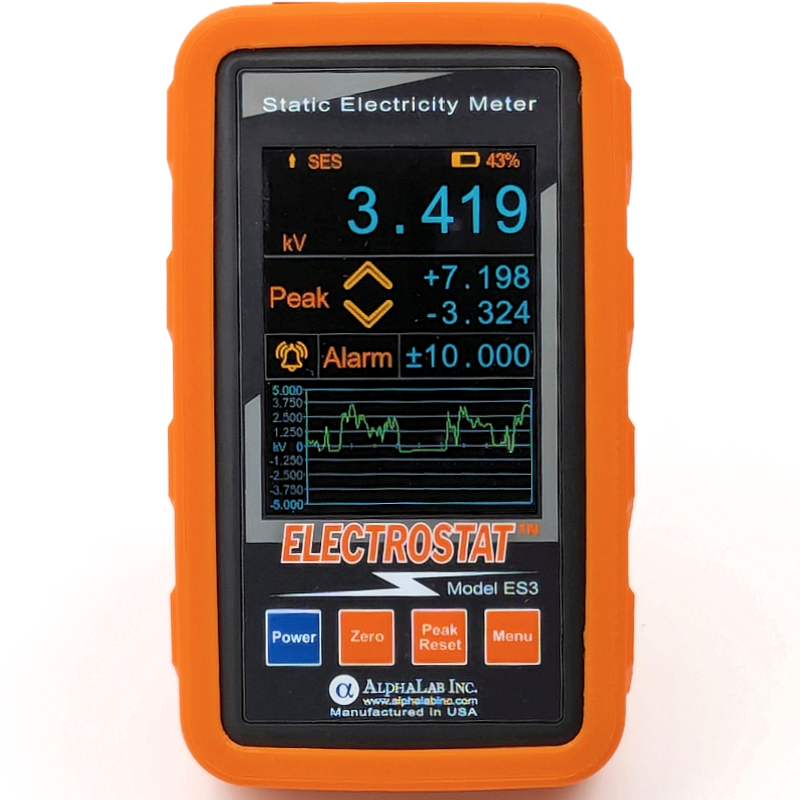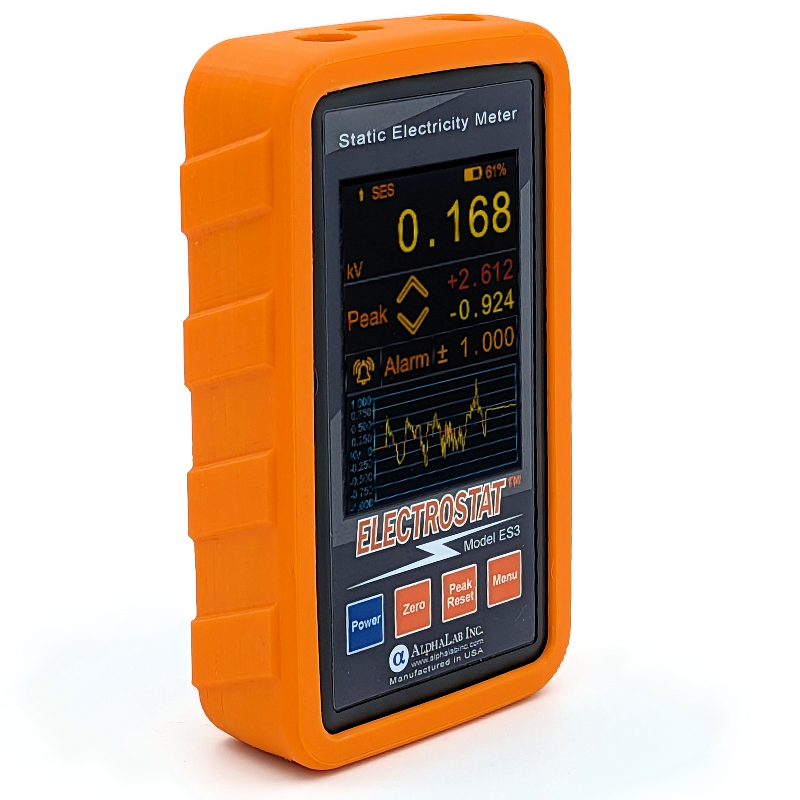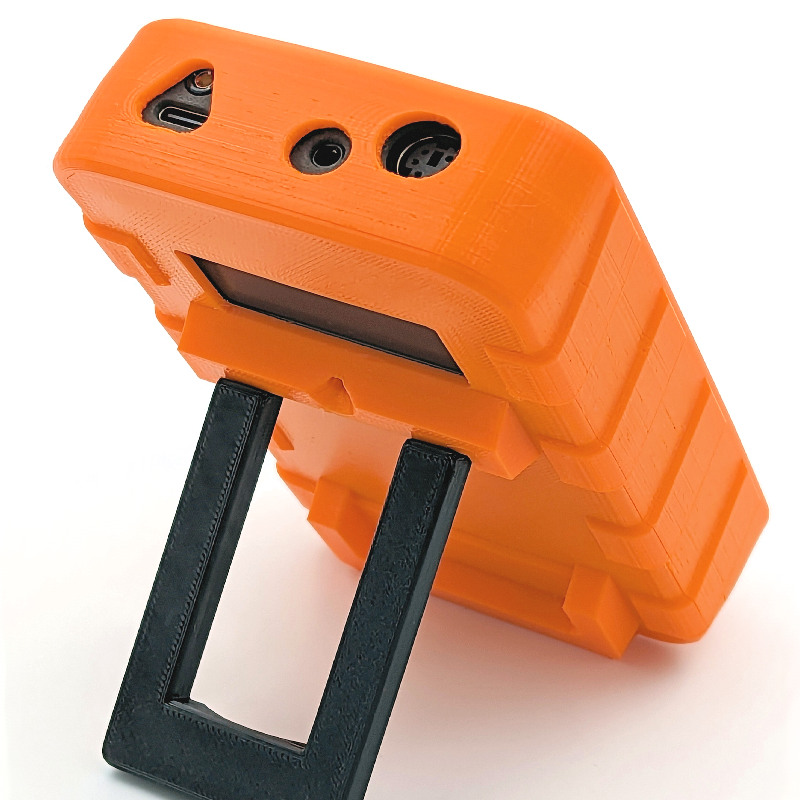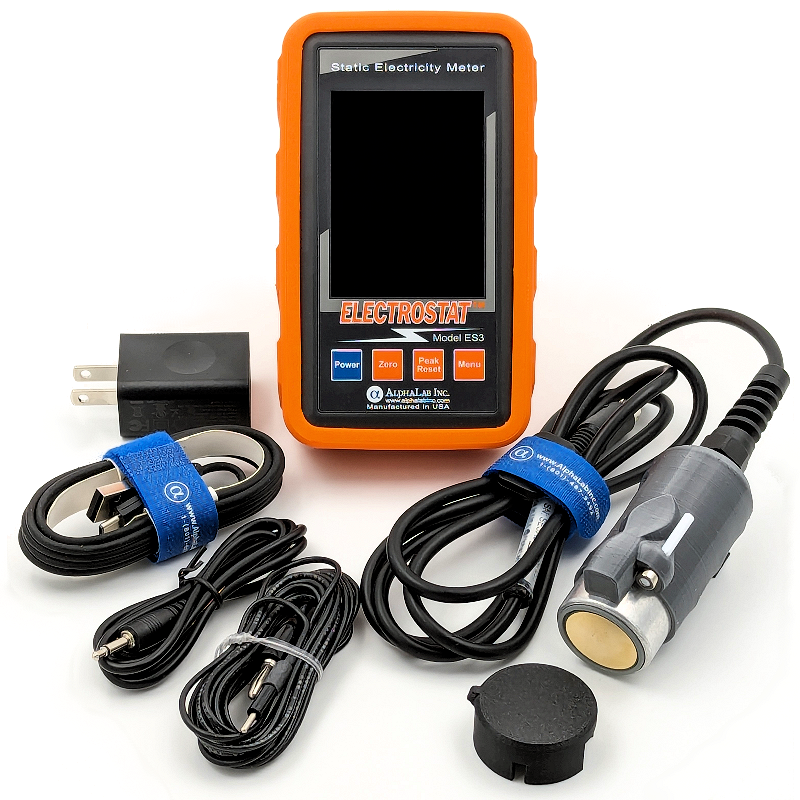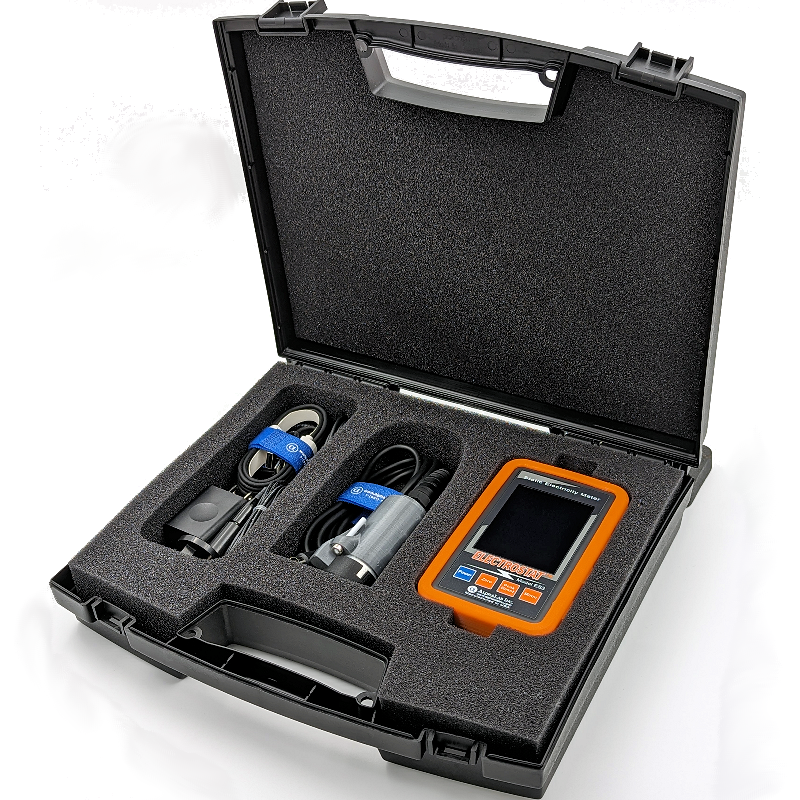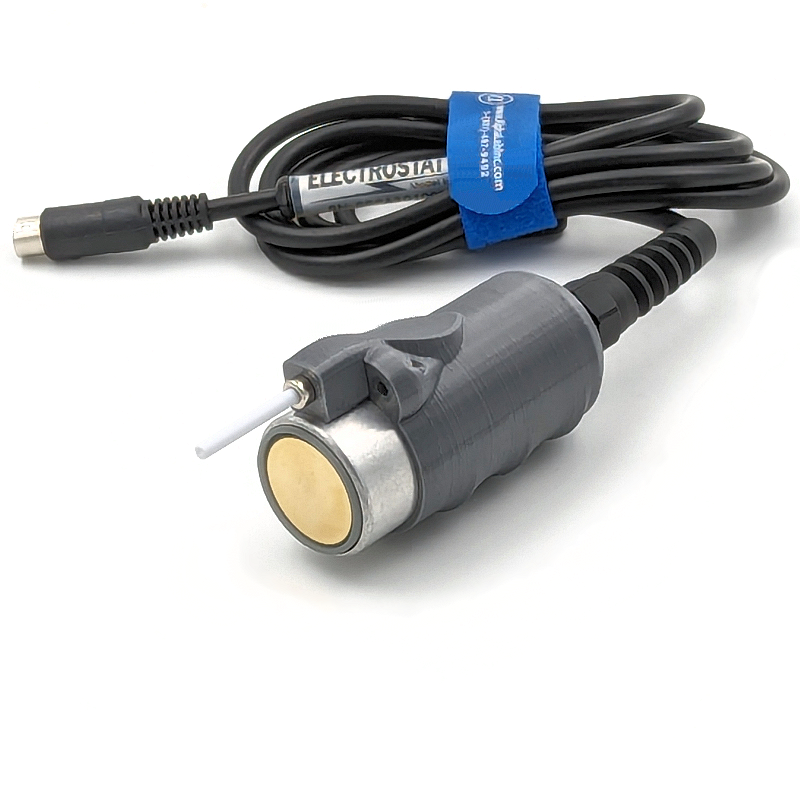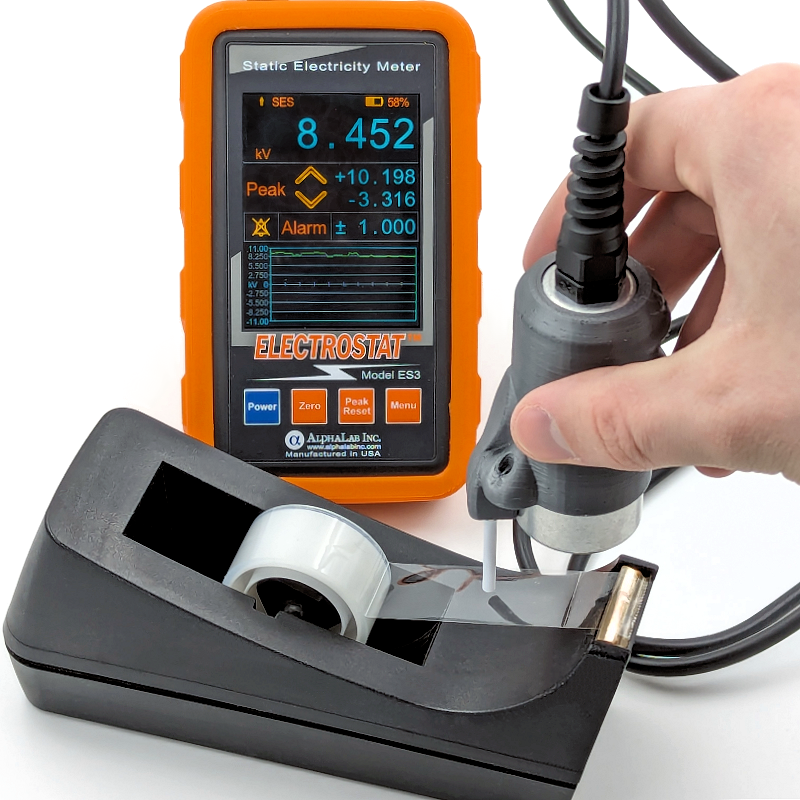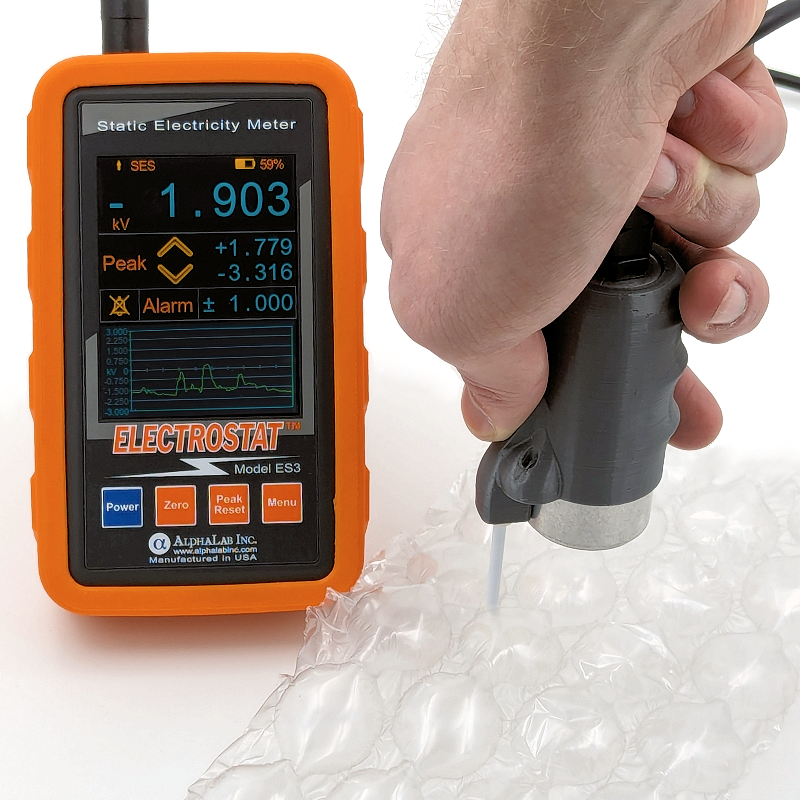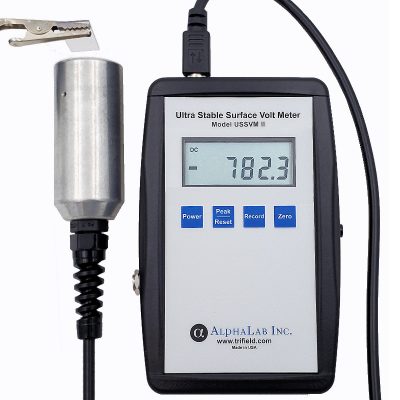Description
The Electrostat ES3 is a handheld Static Electricity Meter (also known as a Static Charge Meter) with very high sensitivity and resolution down to 0.001kV (1 Volt). It is calibrated to be held 1” (25 mm) from the test surface (measures without contact); and comes with a non conductive magnetically attached spacer that positions the sensor at the calibrated distance.
The ES3 can detect even a 1 volt charge anywhere within its full range of +29,999 to -29,999 volts, making it very easy to measure whether a given process is increasing or decreasing the static electricity present; even if the increase or decrease is by a tiny fraction.
The static signal is read and updated on the screen 4 times per second, and the highest positive and highest negative signals are captured and stored. You can clear the Peak-hold data by pressing the “Peak Reset” button at any time to start a new data set. The peak function has a capture window of 0.005 seconds (which is much faster than the display) so even very quick peaks are captured and stored. The alarm function is can be configured by the user to sound if the signal (+ or -) ever exceeds the value set by the user for at least 0.005 seconds. The alarm can be reset or muted at any time, and there are also visual cues of alarm status on the screen.
The Electrostat ES3 is suitable for use in a variety of cleanroom, manufacturing, laboratory, large format printing environments, or anywhere static electricity buildup is of concern. Even a large area can be rapidly scanned to determine the incidence of static buildup. Surfaces can be tested to see if they are discharging properly, ionizer output can be verified, ESD equipment/grounding validated, or simply identify any area where static buildup might be problematic.
When measuring a metallic or conductive surface, the ES3 measures the voltage on the surface. When measuring insulating surfaces, “voltage” is not a well-defined number. In this case, the meter reads a number proportional to the static charge present that can be used to calculate the charge density on the surface. As with any electrostatic voltmeter, the displayed reading depends somewhat on the size of the object being measured and the distance between the object and the sensor. Example, measuring objects smaller than the sensor will result in a decreased field value.
With this meter, all of the following can be measured:
- Amount of charge (or voltage) on surfaces and the effectiveness of antistatic processing. Measuring a tiny fractional change in the surface voltage is useful because it tells you whether the problem is getting better or worse as a new remedy is tried and modified.
- Location, strength and polarity of all static sources. Because of the speed of this meter, unexpected sources are easily found.
- Number (per square cm per second) of air ions that are hitting a surface, and the effectiveness of ionizers and discharge devices.
- DC Electric field strength in air (also AC, which is 1/3 of the difference between + and – peak hold numbers).
- Approximate conductivity or ohms per square of surfaces.
- Approximate attractive/repulsive force between charged surfaces. (This can be calculated from the readings.)
- Voltage differential through the thickness of an insulating sheet or film.
Electrostat ES3 Features:
- 3.2″ IPS Touchscreen with adjustable brightness and light/dark modes for any viewing environment.
- USB C port:
- Supports charging the internal battery from any USB host device or USB charger.
- Data transfer into our all new PC application (available Q2 2024).
- Firmware is also updateable through the PC application (when updates are available).
- Detachable probe allowing for easy repair/replacement; and the platform will also support new probe designs as they are released. Device support for new probes will be updated through firmware updates.
- On screen data plot with adjustable time-base and range control (or autorange). The data plot can also be configured as a signal strength bar.
- 1/8″ Analog output jack calibrated to +/-2.5V = +/-25kV. (The output jack is limited to +/-25kV though the ES3 can display up to +/-30kV)
- Inactivity Timer for Auto power down. Can be set up for 15/30/60 minutes, or disabled. The timer resets anytime the screen or a button is touched.
- 3 Different Alarm Modes:
- Visual only: Display indicates alarm level exceeded, audio is muted.
- Variable pitch: Alarm starts at 1/10 entered alarm level, and the pitch changes with the input signal up to the alarm level.
- Constant Tone: The Alarm sounds only when the entered alarm value is exceeded.
NIST traceable calibration certificate included. Yearly calibration service available from AlphaLab Inc.
Full details on how to perform these measurements.
This meter is not recommended for long-term automated measurements, such as connection to a data acquisition system for hours/days of unattended use. The sensor is prone to charge up with ions from the air over long periods of time, causing drift in the readings. This meter should be manually reset at least every 20 minutes in case the sensor has acquired any charge, and at very strong ion levels (if a lot of sparking is present), external ions will add enough charge that the reset must be done more frequently. For a stable electrostatic voltmeter which is chopper stabilized [“field mill”], so it can be used for long-term automated measurements without ever needing to be reset, use the Ultra Stable Surface DC Volt Meter USSVM2.
Note that the included output jack is an analog voltage that is 1/10000 of the actual voltage at 25 mm distance. It represents the true waveform including DC and transients (such as AC). The output is intended to be plugged into a multimeter, oscilloscope, or ADC system.


